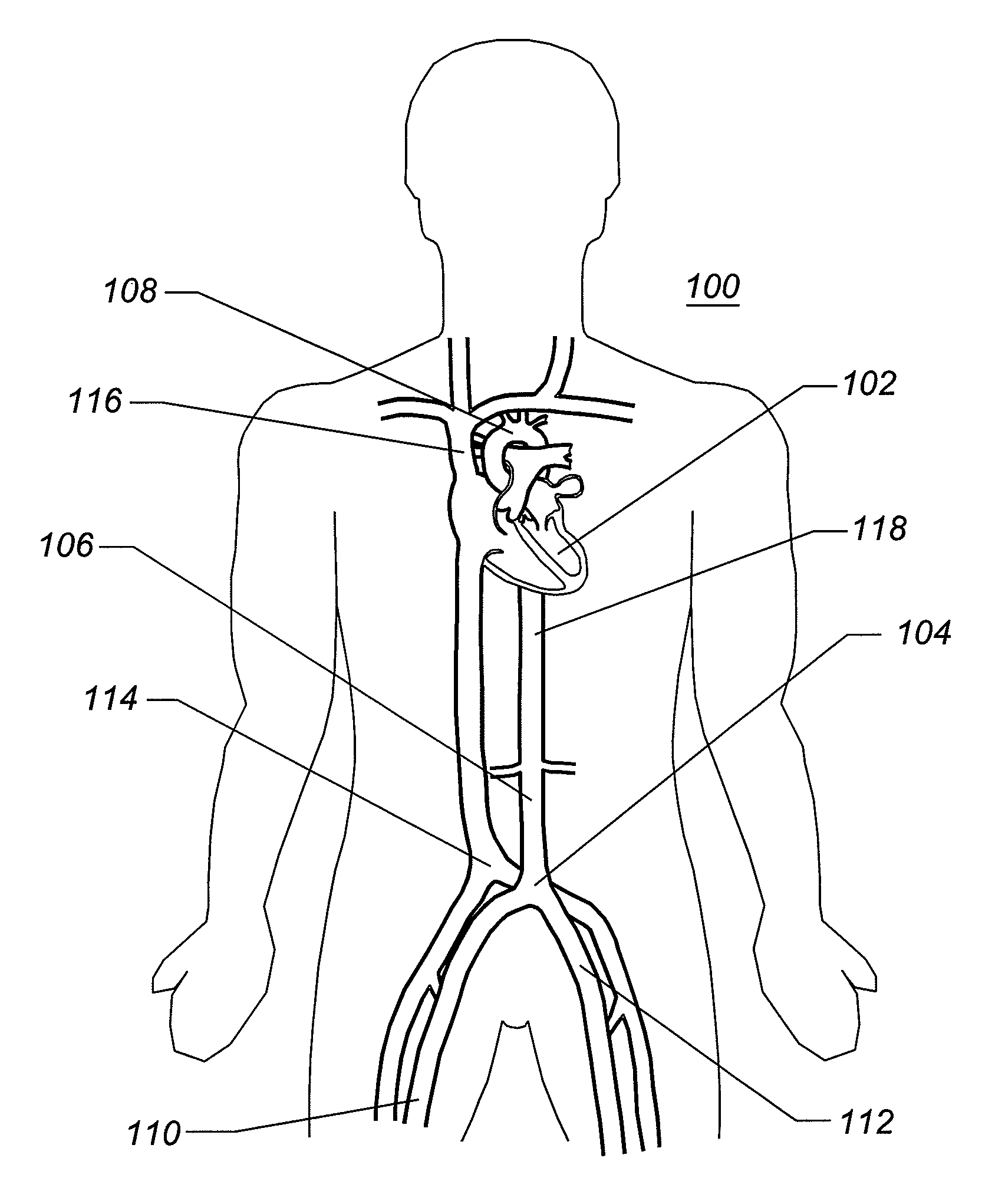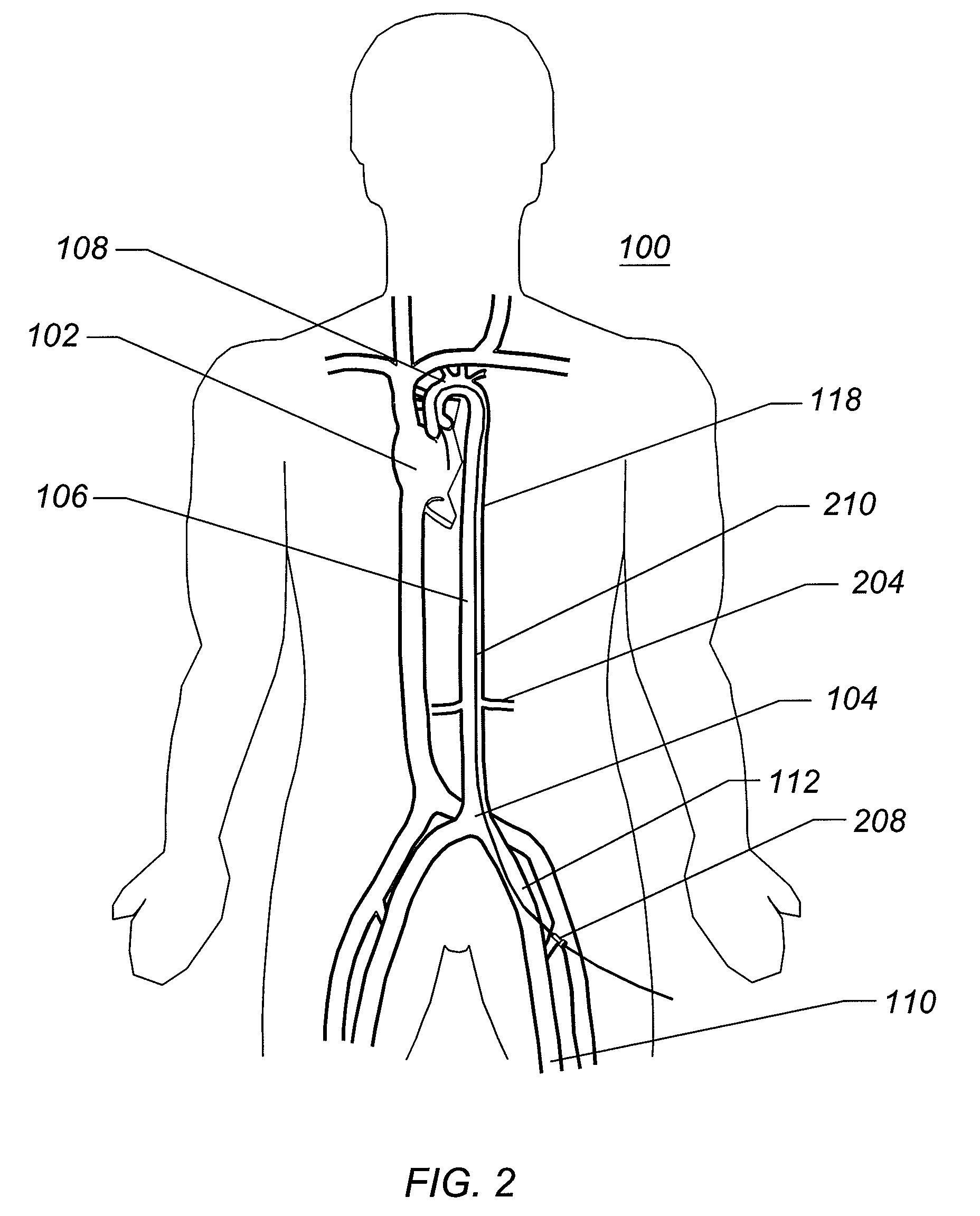Expandable iliac sheath and method of use
a technology of iliac sheath and expansion tube, which is applied in the field of medical devices, can solve the problems of inability to maintain a cross-sectional shape, and achieve the effects of preventing re-collapse of lumens, reducing the risk of re-collapse, and controlling the shape of cross-sectional shap
- Summary
- Abstract
- Description
- Claims
- Application Information
AI Technical Summary
Benefits of technology
Problems solved by technology
Method used
Image
Examples
Embodiment Construction
[0061]As used herein, the terms proximal and distal refer to directions or positions along a longitudinal axis of a catheter or medical instrument. Proximal refers to the end of the catheter or medical instrument closest to the operator, while distal refers to the end of the catheter or medical instrument closest to the patient. For example, a first point is proximal to a second point if it is closer to the operator end of the catheter or medical instrument than the second point. However, the terms anatomically proximal and anatomically distal refer to orientations within the body. A point is more anatomically distal if it is further from the heart than a point described as anatomically proximal.
[0062]FIG. 1 is a schematic frontal (anterior) illustration (looking posteriorly) of a human patient 100 that illustrates components of the central circulation. As shown, the central circulation generally comprises a heart 102, an aortic bifurcation 104, a descending aorta 106, an aortic arc...
PUM
 Login to View More
Login to View More Abstract
Description
Claims
Application Information
 Login to View More
Login to View More - R&D
- Intellectual Property
- Life Sciences
- Materials
- Tech Scout
- Unparalleled Data Quality
- Higher Quality Content
- 60% Fewer Hallucinations
Browse by: Latest US Patents, China's latest patents, Technical Efficacy Thesaurus, Application Domain, Technology Topic, Popular Technical Reports.
© 2025 PatSnap. All rights reserved.Legal|Privacy policy|Modern Slavery Act Transparency Statement|Sitemap|About US| Contact US: help@patsnap.com



